 |
Foodoric and associated companies are chemicals manufacturing companies operated in India USA UAE Europe Asia and other countries around the world. The associates have one or more of certifications like ISO-9001, ISO-14001, ISO-22000:2005, FSSC 22000; OHSAS 18001; Kosher and Halal Certified; HACCP, FSSAI and FDA - GMP approval. Buyers are assured of good quality and CIF wholesale and retail price for supplies of our products. |

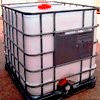
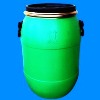
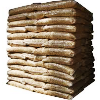
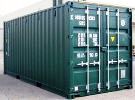
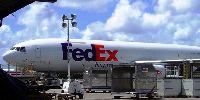
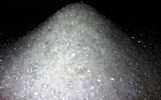
Monopotassium Dipotassium Tripotassium Phosphate, Potassium Phosphate Monobasic Dibasic Tribasic IP BP USP NF FCC ACS Food Grade Manufacturers Suppliers
Potassium Phosphate
Monobasic Dibasic Tribasic, Monopotassium Dipotassium Tripotassium Phosphate IP BP USP NF FCC ACS Food Grade

Monobasic Potassium Phosphate CAS Number 7778-77-0, EINECS EC Number 231-913-4, HS Code 283524**, Molecular Weight 136, Chemical Formula KH2PO4
Dibasic Potassium Phosphate CAS Number 7758-11-4, EINECS EC Number 231-834-5, HS Code 283524**, Molecular Weight 174, Chemical Formula K2HPO4
Tribasic Potassium Phosphate CAS Number 7778-53-2, EINECS EC Number 231-907-1, HS Code 283524**, Molecular Weight 212, Chemical Formula K3PO4
Specifications of Commercial Pure Monopotassium Phosphate or Potassium Phosphate Monobasic
Appearance: Fine White Crystals
Purity: 98% min
P2O5 Content: 51.5% min
Chloride: 0.15% max
Heavy Metals: 20 ppm max
Arsenic: 3 ppm max
Moisture: 3% max
Insoluble: 0.1% max
Specifications of Commercial Pure Dipotassium Phosphate or Potassium Phosphate Dibasic
Appearance: Fine White Crystals
Purity: 96% min
pH 1%: 8.7 - 9.3
Sulphate: 0.02% max
Heavy Metals: 10 ppm max
Arsenic: 4 ppm max
Moisture: 5% max
Insoluble: 0.1% max
Specifications of Commercial Pure Tripotassium Phosphate or Potassium Phosphate Tribasic
Appearance: Fine White Crystals
Purity: 97% min
pH 1%: About 12
Potassium Phosphate Dibasic FCC
Dipotassium Monophosphate, Dipotassium Phosphate FCC Food Grade
Dibasic Potassium Phosphate FCC
K2HPO4 Formula wt 174.18
INS: 340(ii) CAS: [7758-11-4]
DESCRIPTION
Potassium Phosphate, Dibasic, occurs as a colorless or white, granular salt that is deliquescent when exposed to moist air. One gram is soluble in about 3 mL of water. It is insoluble in alcohol. The pH of a 1% solution is about 9.
REQUIREMENTS
Identification: A 1:20 aqueous solution gives positive tests for Potassium and for Phosphate.
Assay: Not less than 98.0% of K2HPO4 after drying.
Arsenic: Not more than 3 mg/kg.
Fluoride: Not more than 10 mg/kg.
Insoluble Substances: Not more than 0.2%.
Lead: Not more than 2 mg/kg.
Loss on Drying: Not more than 2.0%.
Potassium Phosphate Monobasic FCC Food Grade
Potassium Biphosphate; Potassium Dihydrogen Phosphate
Monopotassium Phosphate FCC
Monobasic Potassium Phosphate FCC
KH2PO4 Formula wt 136.09
INS: 340(i) CAS: [7778-77-0]
DESCRIPTION
Potassium Phosphate, Monobasic, occurs as colorless crystals or as a white, granular or crystalline powder. It is stable in air. It is freely soluble in water, but is insoluble in alcohol. The pH of a 1:100 aqueous solution is between 4.2 and 4.7.
Function: Buffer; sequestrant; yeast food.
REQUIREMENTS
Identification: A 1:20 aqueous solution gives positive tests for Potassium and for Phosphate.
Assay: Not less than 98.0% of KH2PO4 after drying.
Arsenic: Not more than 3 mg/kg.
Fluoride: Not more than 10 mg/kg.
Insoluble Substances: Not more than 0.2%.
Lead: Not more than 2 mg/kg.
Loss on Drying: Not more than 1%.
Potassium Phosphate, Tribasic FCC
Tripotassium Phosphate FCC Food Grade
Tribasic Potassium Phosphate FCC
K3PO4 Formula wt 212.27
INS: 340(iii) CAS: [7778-53-2]
DESCRIPTION
Potassium Phosphate, Tribasic, occurs as white, hygroscopic crystals or granules. It is anhydrous or may contain one molecule of water of hydration. It is freely soluble in water, but is insoluble in alcohol. The pH of a 1:100 aqueous solution is about 11.5.
REQUIREMENTS
Identification: A 1:20 aqueous solution gives positive tests for Potassium and for Phosphate.
Assay: Not less than 97.0% of K3PO4, calculated on the ignited basis.
Arsenic: Not more than 3 mg/kg.
Fluoride: Not more than 10 mg/kg.
Insoluble Substances: Not more than 0.2%.
Lead: Not more than 2 mg/kg.
Loss on Ignition Anhydrous: Not more than 5.0%; Monohydrate: Between 8.0% and 20.0%.
Potassium Polymetaphosphate FCC Food Grade
Potassium Metaphosphate; Potassium Polyphosphates
Potassium Kurrol’s Salt
(KPO3)n
INS: 452(ii) CAS: [7790-53-6]
DESCRIPTION
Potassium Polymetaphosphate occurs as a white powder. It is a straight-chain polyphosphate having a high degree of polymerization. It is insoluble in water, but is soluble in dilute solutions of sodium salts.
Function: Emulsifier; moisture-retaining agent.
REQUIREMENTS
Identification:
A. Finely powder about 1 g of sample, and while stirring vigorously, add it slowly to 100 mL of a 1:50 sodium chloride solution. A gelatinous mass forms.
B. Mix 500 mg of sample with 10 mL of nitric acid and 50 mL of water, boil for about 30 min, and cool. The resulting solution gives positive tests for Potassium and for Phosphate.
Assay: Not less than 59.0% and not more than 61.0% of P2O5.
Arsenic: Not more than 3 mg/kg.
Fluoride: Not more than 10 mg/kg.
Lead: Not more than 2 mg/kg.
Viscosity: Between 6.5 and 15 centipoises.
Potassium Pyrophosphate FCC Food Grade
Tetrapotassium Pyrophosphate
K4P2O7 Formula wt 330.34
INS: 450v CAS: [7320-34-5]
DESCRIPTION
Potassium Pyrophosphate occurs as colorless or white crystals or as a white, crystalline or granular powder. It is hygroscopic. It is very soluble in water, but is insoluble in alcohol. The pH of a 1:100 aqueous solution is about 10.5.
REQUIREMENTS
Identification:
A. A 1:20 aqueous solution gives positive tests for Potassium.
B. Dissolve 100 mg of sample in 100 mL of 1.7 N nitric acid. Add 0.5 mL of this solution to 30 mL of quimociac TS. A yellow precipitate does not form. Heat the remaining portion of the sample solution for 10 min at 95°, and add 0.5 mL of it to 30 mL of quimociac TS. A yellow precipitate forms immediately.
Assay: Not less than 95.0% of K4P2O7, calculated on the ignited basis.
Arsenic: Not more than 3 mg/kg.
Fluoride: Not more than 10 mg/kg.
Insoluble Substances: Not more than 0.1%.
Lead: Not more than 2 mg/kg.
Loss on Ignition: Not more than 0.5%.
Dipotassium Hydrogen Phosphate BP Ph Eur
Dipotassium Phosphate BP Ph Eur
K2HPO4 -- 174.2 -- CAS 7758-11-4
Dibasic Potassium Phosphate BP
Potassium Phosphate Dibasic BP
DEFINITION
Dipotassium phosphate contains not less than 98.0 per cent and not more than the equivalent of 101.0 per cent of K2HPO4, calculated with reference to the dried substance.
CHARACTERS
A white powder or colourless crystals, very hygroscopic, very soluble in water, very slightly soluble in alcohol.
IDENTIFICATION
A. Solution S (see Tests) is slightly alkaline
B. Solution S gives reaction of phosphates.
C. Solution S gives reaction of potassium.
TESTS
Solution S:
Dissolve 5.0 g in distilled water and dilute to 50 ml with the same solvent.
Appearance of solution:
Solution S is clear and colourless.
Reducing substances:
Heat on a water-bath for 5 min a mixture of 5 ml of solution S, 5 ml of dilute sulphuric acid and 0.25 ml of 0.02 M potassium permanganate. The solution remains faintly pink.
Chlorides:
To 2.5 ml of solution S add 10 ml of dilute nitric acid and dilute to 15 ml with water. The solution complies with the limit test for chlorides (200 ppm).
Sulphates:
To 1.5 ml of solution S add 2 ml of dilute hydrochloric acid and dilute to 15 ml with distilled water. The solution complies with the limit test for sulphates (0.1 per cent).
Arsenic:
5 ml of solution S complies with limit test A for arsenic (2 ppm).
Iron:
10 ml of solution S complies with the limit test for iron (10 ppm).
Heavy metals:
Dissolve 2.0 g in 8 ml of water. Acidify with about 6 ml of dilute hydrochloric acid (pH 3 to 4) and dilute to 20 ml with water. 12 ml of the solution complies with limit test A for heavy metals (10 ppm).
Sodium:
If intended for use in the manufacture of parenteral dosage forms, it contains not more than 0.1 per cent of Na, determined by atomic emission spectrometry.
Loss on drying:
Not more than 2.0 per cent, determined on 1.000 g by drying in an oven at 125C to 130C.
Bacterial endotoxins:
Less than 1.1 IU/mg, if intended for use in the manufacture of parenteral dosage forms without a further appropriate procedure for the removal of bacterial endotoxins.
Potassium Dihydrogen Phosphate BP Ph Eur
Monopotassium Phosphate BP Ph Eur
KH2PO4 -- 136.1 -- CAS 7778-77-0
Monobasic Potassium Phosphate BP
Potassium Phosphate Monobasic BP
DEFINITION
Potassium dihydrogen phosphate contains not less than 98.0 per cent and not more than the equivalent of 100.5 per cent of KH2PO4, calculated with reference to the dried substance.
CHARACTERS
A white, crystalline powder or colourless crystals, freely soluble in water, practically insoluble in alcohol.
IDENTIFICATION
A. Solution S (see Tests) is faintly acid.
B. Solution S gives reaction (b) of phosphates.
C. 0.5 ml of solution S gives reaction of potassium.
TESTS
Solution S: Dissolve 10.0 g in carbon dioxide-free water prepared from distilled water and dilute to 100 ml with the same solvent.
Appearance of solution
Solution S is clear and colourless.
pH:
To 5 ml of solution S add 5 ml of carbon dioxide-free water. The pH of the solution is 4.2 to 4.5.
Reducing substances:
To 5 ml of solution S add 5 ml of dilute sulphuric acid and 0.25 ml of 0.02 M potassium permanganate. Heat on a water-bath for 5 min. The colour of the permanganate is not completely discharged.
Chlorides:
Dilute 2.5 ml of solution S to 15 ml with water R. The solution complies with the limit test for chlorides (200 ppm).
Sulphates:
To 5 ml of solution S add 0.5 ml of hydrochloric acid and dilute to 15 ml with distilled water. The solution complies with the limit test for sulphates (300 ppm).
Arsenic:
0.5 g complies with limit test A for arsenic (2 ppm).
Iron:
10 ml of solution S complies with the limit test for iron (10 ppm).
Sodium:
If intended for use in the manufacture of parenteral dosage forms, it complies with the test for sodium. Not more than 0.1 per cent of Na, determined by atomic emission spectrometry
Heavy metals:
12 ml of solution S complies with limit test A for heavy metals (10 ppm).
Loss on drying:
Not more than 2.0 per cent, determined on 1.000 g by drying in an oven at 125C to 130C.
Dibasic Potassium Phosphate USP
Dipotassium Phosphate USP
Dibasic Potassium Phosphate USP
Potassium Phosphate Dibasic USP
K2HPO4 174.18
Phosphoric acid, dipotassium salt.
Dipotassium hydrogen phosphate [CAS 7758-11-4].
Dibasic Potassium Phosphate contains not less than 98.0 percent and not more than 100.5 percent of K2HPO4, calculated on the dried basis.
Identification: A solution (1 in 20) responds to the tests for Potassium and for Phosphate.
pH: between 8.5 and 9.6, in a solution (1 in 20).
Loss on drying: Dry it at 105 to constant weight: it loses not more than 1.0% of its weight.
Insoluble substances: Dissolve 10 g in 100 mL of hot water, filter through a tarred filtering crucible, wash the insoluble residue with hot water, and dry at 105 for 2 hours: the weight of the residue so obtained does not exceed 20 mg (0.2%).
Carbonate: To 1 g add 3 mL of water and 2 mL of 3 N hydrochloric acid: not more than a few bubbles are evolved.
Chloride: A 1.0-g portion shows no more chloride than corresponds to 0.40 mL of 0.020 N hydrochloric acid (0.03%).
Sulfate: A 0.20-g portion shows no more sulfate than corresponds to 0.20 mL of 0.020 N sulfuric acid (0.1%).
Arsenic: 3 ppm.
Iron: the limit is 0.003%.
Sodium: A solution (1 in 10) tested on a platinum wire imparts no pronounced yellow color to a non-luminous flame.
Heavy metals: the limit is 0.001%.
Limit of fluoride: The limit is 0.001%.
Limit of monobasic or tribasic salt: Dissolve 3 g in 30 mL of water, cool to 20C, and add 3 drops of thymol blue TS: a blue color is produced, which is changed to yellow (with a greenish tinge) by the addition of not more than 0.4 mL of 1 N hydrochloric acid.
Monobasic Potassium Phosphate USP NF
Monopotassium Phosphate USP NF
Monobasic Potassium Phosphate USP NF
Mono Potassium Phosphate USP NF
Potassium Phosphate Monobasic USP NF
KH2PO4 --- 136.09
Phosphoric acid, monopotassium salt.
Monopotassium phosphate [CAS 7778-77-0].
Monobasic Potassium Phosphate, dried at 105 for 4 hours, contains not less than 98.0 percent and not more than 100.5 percent of KH2PO4.
Identification: A solution (1 in 20) responds to the tests for Potassium 191 and for Phosphate.
Loss on drying: Dry it at 105 for 4 hours: it loses not more than 1.0% of its weight.
Insoluble substances: Dissolve 10 g in 100 mL of hot water, filter through a tarred filtering crucible, wash the insoluble residue with hot water, and dry at 105 for 2 hours: the residue does not exceed 20 mg (0.2%).
Arsenic: 3 ppm.
Lead: not more than 5 ppm of Pb).
Heavy metals: the limit is 0.002%.
Limit of fluoride: The limit is 0.001%.
Potassium Metaphosphate USP NF
KPO3 118.07 --- [7790-53-6].
Metaphosphoric acid (HPO3), potassium salt.
Potassium Metaphosphate is a straight-chain polyphosphate, having a high degree of polymerization. It contains the equivalent of not less than 59.0 percent and not more than 61.0 percent of P2O5.
Identification:
A: Add 1 g of finely powdered Potassium Metaphosphate, slowly and with vigorous stirring, to 100 mL of sodium chloride solution (1 in 50): a gelatinous mass is formed.
B: Boil a mixture of 0.5 g of Potassium Metaphosphate, 10 mL of nitric acid, and 50 mL of water for 30 minutes, and cool: the resulting solution responds to the tests for Potassium and for Phosphate.
Viscosity: Mix 300 mg with 200 mL of sodium pyrophosphate solution (3.5 in 1000), using a magnetic stirrer. Determine the viscosity of the clear solution obtained, or of the liquid phase of the mixture obtained after 30 minutes of continuous stirring: the viscosity is between 6.5 and 15 centipoises.
Lead: not more than 5 ppm of Pb.
Heavy metals: the limit is 0.002%.
Limit of fluoride: To pass the test.
Potassium Phosphate Dibasic ACS Reagent
Dibasic Potassium Phosphate ACS
Dipotassium Phosphate ACS
Dipotassium Hydrogen Phosphate
K2HPO4
Formula Wt 174.18
CAS Number 7758-11-4
REQUIREMENTS
Assay: 98.0% K2HPO4
pH of a 5% solution: 8.5-9.6 at 25C
MAXIMUM ALLOWABLE
Insoluble matter: 0.01%
Loss on drying at 105C: 1.0%
Chloride (Cl): 0.003%
Nitrogen compounds (as N): 0.001%
Sulfate (SO4): 0.005%
Heavy metals (as Pb): 5 ppm
Iron (Fe): 0.001%
Sodium (Na): 0.05%
Potassium Phosphate Tribasic ACS Reagent
Tripotassium Orthophosphate
Tripotassium Phosphate ACS
Tribasic Potassium Phosphate ACS
K3PO4
Formula Weight 212.27
K3PO4-7H2O
Formula Wt 338.38
CAS Number 7778-53-2 anhydrous and 22763-02-6 heptahydrate
REQUIREMENTS
Assay (as-is basis): 98% K3PO4 or K3PO4-7H2O
MAXIMUM ALLOWABLE
Dibasic potassium phosphate (K2HPO4): 1%
Excess alkali (as KOH): 1%
Insoluble matter: 0.01%
Chloride (Cl): 0.005%
Nitrogen compounds (as N): 0.002%
Heavy Metals (as Pb): 0.002%
Iron (Fe): 0.001%
Sulfate (SO4): 0.005%
Sodium (Na): 0.1%
Potassium Phosphate Monobasic ACS Reagent
Potassium Dihydrogen Phosphate ACS
Monopotassium Phosphate ACS
Monobasic Potassium Phosphate ACS
KH2PO4
Formula Weight 136.09
CAS Number 7778-77-0
REQUIREMENTS
Assay: 99.0% KH2PO4
pH of a 5% solution: 4.1-4.5 at 25C
MAXIMUM ALLOWABLE
Insoluble matter: 0.01%
Loss on drying at 105C: 0.2%
Chloride (Cl): 0.001%
Nitrogen compounds (as N): 0.001%
Sulfate (SO4): 0.003%
Heavy metals (as Pb): 0.001%
Iron (Fe): 0.002%
Sodium (Na): 0.005%

Monopotassium Dipotassium Tripotassium Phosphate, Potassium Phosphate Monobasic Dibasic Tribasic Manufacturers Suppliers:
Foodoric Group of Cos
India, USA, UAE, Europe
e-mail: info@foodoric.com

Copyright
Last
14 March, 2022
Monopotassium Dipotassium Tripotassium Phosphate, Potassium Phosphate Monobasic Dibasic Tribasic Suppliers, Exporters, Importers, Manufacturers offering good CIF wholesale and retail prices, quality and online information.
A jackal woke up early in the morning and went in to the plains. He looked at his long shadow in the rising morning sun and said to himself, "I must have a camel for my meal today".
He kept moving around till noon and it was getting hot and the jackal was tired. He was also hungry and thirsty. He looked at his small shadow in the mid-day sun. He murmered, "I was only joking about the camel, a mouse will do".